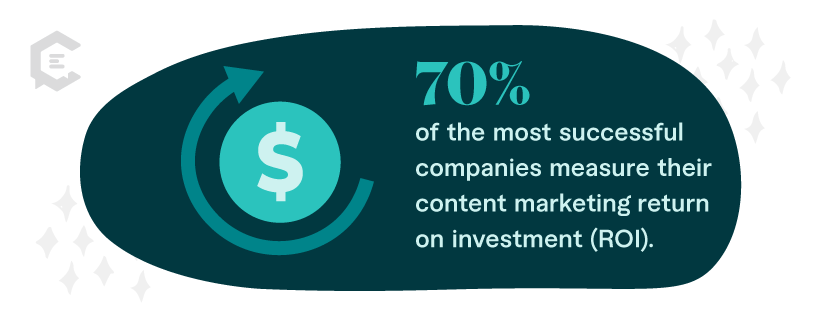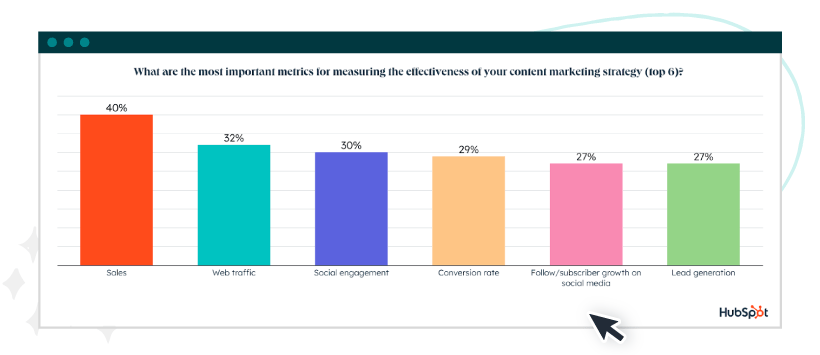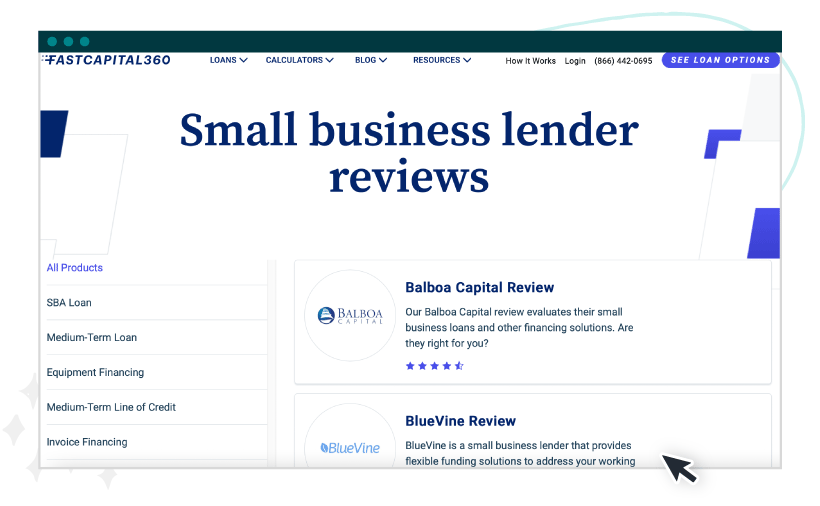The financial industry heavily relies on content marketing. Quality content can drive brand awareness, educate audiences, and attract high-quality leads.
However, not every piece of content or every strategy yields that kind of impact. It’s important to closely monitor content marketing success. Especially in finance, to ensure that the time and resources you’ve invested are paying off.
In this article, we walk you through how to measure content marketing success in the financial industry. We’ll also examine why tracking content marketing performance for financial institutions is important.
The Importance of Measuring Content Marketing Success in Finance
Semrush found a link between success and measuring content marketing performance. According to the report, 70% of the most successful companies measure their content marketing return on investment (ROI).
This is because measuring your content marketing performance gives you an idea of what’s working and what isn’t. That’ll help you fully utilize the benefits of finance content marketing.
You can then use these insights to fine-tune your finance content strategy and optimize to improve your results. This may involve adjusting your content topics, formats, and distribution channels. That way, you’ll better reach your target audience with the right content.
Moreover, you’ll be able to demonstrate the value of content marketing to your stakeholders.
The idea is to show them how content marketing drives traffic to your site, generates leads, or closes sales. This will help you prove why it’s a valuable investment for your financial institution.
Key Metrics and KPIs for Financial Content Marketing
HubSpot’s Marketing Strategy & Trends Report found that the following metrics were most important for measuring content marketing effectiveness:
- Sales
- Website traffic
- Social engagement
- Conversion rate
Image Source: HubSpot
You can use similar metrics to measure the success of your finance content marketing campaigns.
Website traffic
The amount of traffic coming to your website indicates how many people are discovering and consuming your content.
Conversion rates
This metric helps you understand how effective your content is at enticing people to take a desired action. The action could be anything from signing up for your newsletter to downloading a whitepaper or even signing up for a free demo.
Customer engagement
Engagement metrics such as time spent on a page, social media shares, and number of page visits are useful. They give you an idea of your audience’s interest and engagement with the content you’re creating. They help you dodge one of the most common finance content marketing pitfalls – not fully understanding your target audience.
Return on investment (ROI)
This metric helps you weigh the financial return your content marketing efforts generate.
Aligning Metrics with Campaign Objectives
Measuring content marketing success isn’t just about tracking random metrics that “might” be important. Otherwise, you’ll get a lot of noise (read: irrelevant metrics). This makes it hard to pinpoint exactly how your campaign is performing.
Instead, you need to look at the metrics that align with your campaign. That way, you can clearly see your progress toward your specific goals. This will help you streamline your measurement efforts and filter out the metrics you don’t need.
How to effectively align metrics and objectives
To align your content marketing metrics to your objectives, start by asking what you wish to achieve for this specific campaign.
What does success look like to you?
Then think of the key performance indicators (KPIs) that make sense for the campaign objective.
For example, if you want your finance content marketing campaign to drive more leads, you’ll need to focus on your conversion rates, email signups, and form submissions. Or, if your objective is to increase revenue, you’d want to focus on your sales metrics.
Tracking and Interpreting Metrics
Tools for tracking metrics
After you’ve identified the metrics to help you measure your content marketing success, it’s time to look for the right tools to track those metrics.
In most cases, Google Analytics provides you with free access to some of the key metrics.
This includes website traffic, page views, time spent on the page, and conversion rate. You can also use dedicated content marketing analytics tools for more comprehensive measurements.
Some of the most popular options include HubSpot, Buffer, Semrush, and BuzzSumo.
Interpreting and applying results
The next step is to interpret the data to identify finance content marketing trends and patterns.
This is one of the most challenging aspects of measuring finance content marketing success. It involves extracting valuable insights that you can then use to make informed decisions. This will eventually help you to improve your content marketing outcome.
You’ll need to make sense of the data, connect the dots, and interpret how it’s impacting your business.
For example, if your conversion rate remains low, although you’re getting tons of traffic, you might need to create more impactful content. Alternatively, if you’re not attracting enough traffic, perhaps you need to review your content distribution methods. Or, ramp up your search engine optimization (SEO) efforts.
Best Practices from Successful Financial Institutions
What better way to learn about finance content marketing than through some of the top players in the financial industry?
Here are two case studies highlighting content marketing best practices from top financial institutions:
Case Study #1: Wise – Developing high-value content to address pain points
To achieve content marketing success in finance, you need to address your target audience’s biggest pain points. That’s exactly what Wise has been doing through its blog content.
The company’s target audience mainly comprises people who want to make international transactions and bank transfers. For instance, ex-pats, travelers, and business owners.
So Wise produces highly valuable content for different target audience groups and addresses their common pain points. This allows them to target pain point keywords and attract searchers who want to learn about those topics.
Case Study #2: FastCapital 360 – Providing education through competitor reviews
Mentioning your competitors isn’t necessarily a bad move, especially if you know how to do it balanced and tactfully.
For FastCapital 360, this meant providing their audience with in-depth lender reviews. Specifically to help their prospects weigh the pros and cons of different lenders. The idea is to help them make an informed decision and eventually consider the company’s products.
By providing these lender reviews, FastCapital 360 is also effectively attracting people searching for competitor keywords and turning them into prospects.
The Power of Effective Measurement in Content Marketing
The right measurement strategy can take your finance content marketing several steps further.
You can make informed decisions by tracking metrics that align with campaign objectives. It’s also important to carefully interpret and apply results to achieve your business goals.
The abovementioned strategies can help you get on track with your content marketing measurement. Make the most of them to see how well your efforts are paying off and how to get the most out of your strategy.
Then find an experienced team of finance writers to create more impactful content or scale your content production efforts.
Key takeaways
- Make sure to focus on metrics specifically aligned with your campaign objectives.
- Carefully interpret the data from your measurement efforts to extract valuable insights.
- Use the insights to inform your strategy and consistently make improvements to maximize content marketing success.









